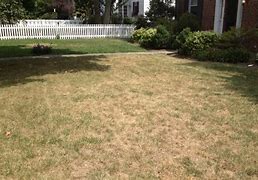How To Help Your Lawn During A Drought
Read MorePosted on: Jul 01, 2021Luis M Pérez
July and August– Essential Months To Help Your Lawn For Drought
July and August are typically the hottest summer months. Therefore, when at all possible, maintain constant watering. We will outline how to help your lawn during a drought and what is needed to help your lawn survive the hot summer months.
Lawn Dormancy In Ilinois, Indiana
A typical lawn in Illinois and Indiana is comprised of cool-season grasses such as Kentucky bluegrass, fine fescue, and perennial ryegrass. These grasses naturally go dormant during periods of hot, dry weather, essentially stopping active growth. As a result, dormant grass will often look brown and dead, but the roots and crowns of the plants are still alive and will be ready to resume growth as soon as growing conditions improve.
Lawn Dormancy In Texas
A typical Lawn in Texas is comprised of warm-season grasses such as St. Augustine, Bermuda, and Zoysia grasses. St. Augustine grass will not survive in dry inland areas without supplemental irrigation. Therefore, you will need to be careful and water as often as legally possible. Bermuda grass is among the most drought-tolerant grass. After the grass is established, it can stay green with only 1 inch to 1-1/2 inches of water per week (less than many other grass types). It goes dormant in long periods of drought and can survive in this state for four weeks. Zoysia survives drought by quickly shutting down active growth and conserving resources. As soon as the lawn receives moisture, the grass will return to a lush, green carpet.

5 Tips To Help With Drought
1. Water, water, water. The best way to protect your lawn during a drought, of course, is to water the grass regularly. Unfortunately, that’s not always an option. Some counties institute water restrictions during a drought, making it illegal to water your lawn at times. However, most counties will provide you with watering days, which is important to maximize these days.
2. Rake out thatch. To help your lawn absorb what little moisture is available, use a rake to remove thatch from the lawn. Thatch is simply an overaccumulation of dead organic lawn matter, such as grass clippings and shredded leaves. Removing thatch is important any time of the year but especially during a drought.
3. Liquid aeration. Oxygenates the soil and helps the lawn greatly by letting it absorb moisture more easily. Liquid aeration also helps water get directly to the roots.
4. Feed the lawn. Applying the correct fertilizer will help your lawn preserve nutrients throughout the summer months, and a fall fertilizer will help your lawn out of dormancy.
5. Do Not Mow. If the lawn is dormant, it is best not to mow.
Want To Learn More Or Have Questions?
For more information on drought, please contact our Lawn Care Expert, Luis Perez, via email at luisp@doctorgreen.com.

